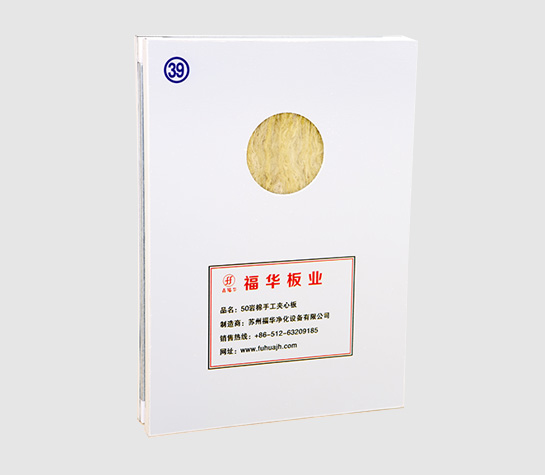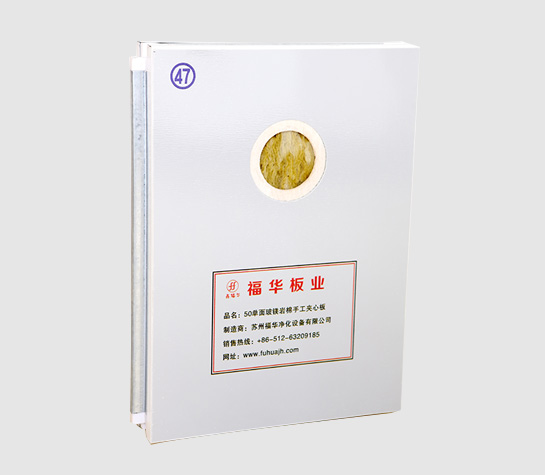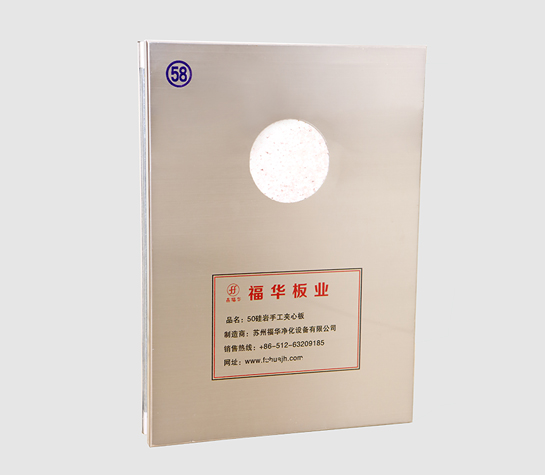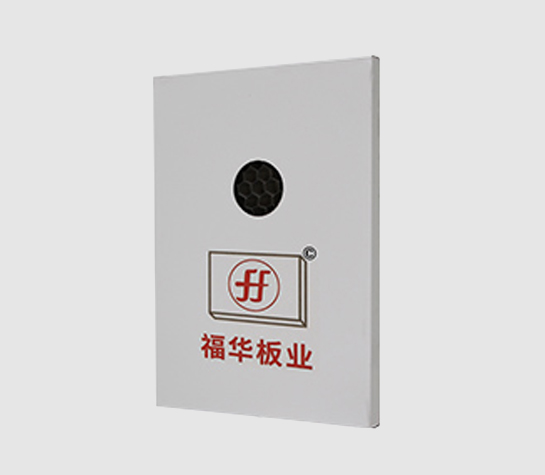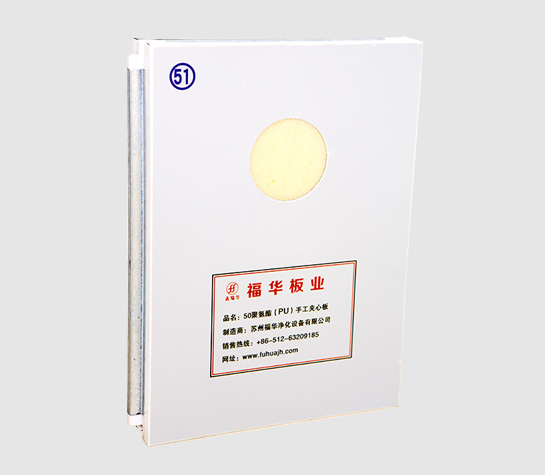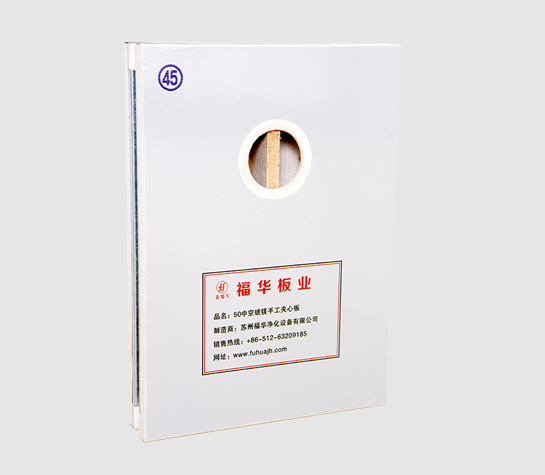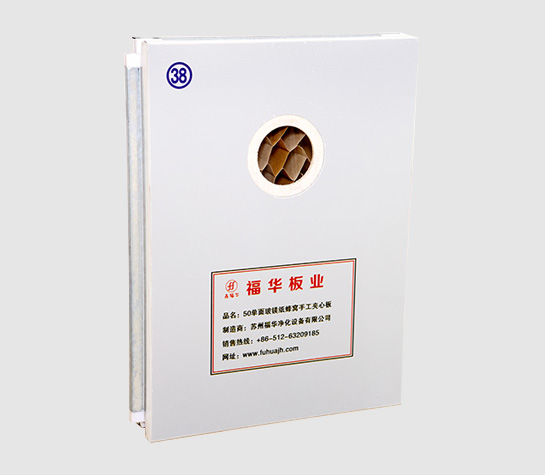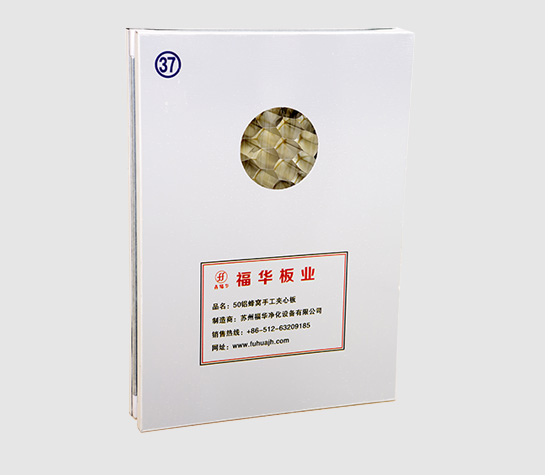The construction of clean room engineering is a systematic engineering, usually in the large space created by the main structure of the civil construction frame, the use of decoration materials that meet the requirements, and the separation and decoration according to the process requirements into a clean room that meets various usage requirements. Pollution control in a clean room needs to be completed jointly by the major of purification air conditioning and the major of automatic control.
1. The design concept of clean room engineering company
Simple and generous appearance, advanced equipment, to create a safe, clean, environmentally friendly, energy-saving, warm and quiet experimental and production environment.
Second, the technical requirements for the color steel plate partition of the clean room project
Height and noise requirements : clean room ceiling and air clear height of 3 meters, clean room noise ≤ 60dB. Relative humidity: 40%~60%, temperature 22℃±3℃, not exceeding the high limit in summer, and not lower than the low limit in winter.
Color steel plate wall and ceiling: The partition wall in the clean room is made of high-quality double-sided composite sandwich purification color steel plate and glass window partition wall. The partition wall must reach heat insulation, sound insulation, anti-corrosion, fire prevention, easy cleaning and disinfection. The junction between the color steel plate wall surface and the air and the color steel plate wall surface adopts epoxy resin sprayed aluminum alloy arc with a radius of not less than 30mm. The joints of color steel plates should be sealed and disposed of. The sealant needs to use imported medical sealant, and must not produce volatile and toxic gases. The exterior coating of the color steel plate, the arc epoxy resin spraying materials and the seam sealing materials must all have antistatic properties to prevent harmful particles from being adsorbed on the outer surface of the wall. The color steel plate must be tested before installation. The partition wall of the aisle adopts half-height double-layer tempered glass windows treated with imported alumina (the double-layer glass contains adjustable aluminum alloy shutters). The thickness of the glass is 8mm, and the distance from the bottom edge to the ground is 1100mm. The distance between the zone and the outer wall is 12mm sandblasted tempered glass.
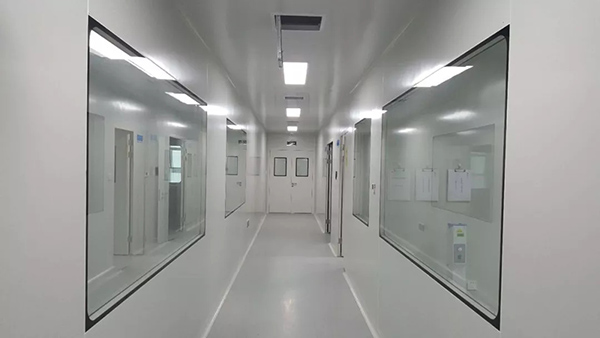
Color steel plate wall installation process : install one M6 shrink bolt every 1200mm to fix the color steel plate aluminum trough, the difference of the aluminum trough shall not be ≥3mm, and it shall not affect the color steel plate installation. The color steel plate is vertically clamped into the aluminum tank. During the clamping process, the electric line pipe device must be inserted into the color steel plate vertically. It is necessary to maintain the flatness of the color steel plate when inserting the color steel plate, and the color steel plate must not be dented due to the installation of electrical pipes. After the color steel plate is inserted into the aluminum trough, a 50mm×50mm L-shaped angle iron is hoisted from the ceiling slab to fix the color steel plate through self-tapping screws. The L-shaped angle iron must be welded with 45° diagonal bracing to avoid the degree of shaking of the color steel plate behind the installation.
In the clean room project, all gaps on the exterior of the enclosure structure (splicing joints, wire holes, piping through walls, nail holes, and the edges of the sealing cover at all other openings) should be sealed. High attention must be paid to the tightness of the gap. After the installation is completed, all handover positions must be equipped with arcs for disposal, and no sanitary corners should be produced.
Wall specifications : thickness of 50mm (single-sided color steel plate), width of 1200mm, length can be designed according to the height of the room, wall strength performance: when the pressure difference between the two sides of the 5m high wall panel is 40Pa, the bending level is less than 2 Mm/m, 0.6mm color composite steel plate, sandwich material is 50mm glass magnesium board, its filling density is greater than 110kg/m3, the fire resistance limit of the wall should be greater than 1 hour, and it is a first-class fire-resistant building conforming to the GB50045-95 rule The non-load-bearing exterior wall of the room and the partition walls on both sides of the scattered walkway require fire resistance. The top plate method: 50mm thick inner glass magnesium board can be used for continuous ceiling of artificial color steel plate; the load-bearing performance is that the load per unit area is greater than 150KG/m2, and the board is made of enterprise Orifice connection, the keel can adopt the "ancient" type hidden keel; the outer color steel plate thickness is 0.6mm, all the wall and the ceiling, the corners of the wall and the wall are connected by arcs, and the 1.2mm thick aluminum alloy is connected. The radius of curvature of the female corner is 50mm, and the radius of curvature of the male corner is 70mm. The bead and the female and male corners and other accessories are made of champagne-colored electroplated profiles.
Special PVC rubber air for clean room: DNA clean room adopts special PVC coil for clean room, thickness ≥ 2mm, air and wall adopt arc connection of R ≥ 50mm, special clean room PVC rubber air is safe, non-toxic, pollution-resistant and resistant The effect of chemicals is easy to clean. The PVC rubber aerial joints are seamlessly joined by special welding rods. The color should be confirmed by the customer after the winning unit enters the field.
Wall and column surface : The walls and partitions are made of glass-magnesium sandwich color steel plates, the specifications are 50mm thick, and the steel plate thickness is 0.6mm. The radius of curvature of the male angle is 70mm, and the fittings such as the bead and the male and female angles are made of champagne-colored electroplated profiles.
Steel doors, steel windows:
1. The edging of the door frame of the wall and door opening (bucket board, face), using =1mm304 sanding (brushed) stainless steel, each door hinge is stainless steel, the number is not less than three, the final number and specifications of the doors and windows, After the winning unit enters the site, it should be confirmed after reviewing the floor plan of each building and the site.
2. Door panel: 50mm thick, made of 0.6mm high-quality electro-galvanized steel plate, filled with glass magnesium plate, and fully bonded with the steel plate to ensure the strength of the door panel, 2 safe steel pins, 3 PVC strips. The color of the door panel is finally confirmed by the owner.
3. Door frame: rectangular frame, built-in joint angle, 45-degree splicing, 1.2mm thick high-quality aluminum alloy profile, and EPDM sealing strip embedded in the sealing groove.
4. Hardware accessories: high-quality concealed two-stage lock body, high-quality lock core, black engineering plastic arc-shaped fireproof handle, combined cover, double-door fixed fan with integral concealed latch. After the door hinge device is flush with the door frame of the door leaf, there is no protrusion for easy cleaning.
5. The door has rounded corner windows. The window glass is fixed by steel glass bead, and the bead and the yin and yang corners and other accessories are champagne electroplated profiles; the window glass should be tempered safety glass. Please refer to the design drawings for the window size, and the glass thickness shall not be less than 6mm. The door is equipped with a door closer, so that the door can be closed automatically and gently. The material and color should be in harmony with the door body.
3. Floor construction technology plan
Unwinding rules
1. When the unwinding team enters the site for construction, the acceptance inspection of the entrusted site of the foundation disposal team must be suspended. After the two parties terminate the acceptance and communication procedures, they apply to the supervisor for pre-inspection, and the construction can be suspended before the pre-inspection is passed;
2. The staff of the unwinding team must be aware of the light source, size, shape of the site, Party A's requirements, the laying order of the laying group, and the status of the data, etc., arrange in advance, construct according to the drawing, and follow the criterion of economy. To arrange the materials, reduce the loss, and use the waste as much as possible. Note that the direction of the arrow on the reverse side of the PVC floor must be pergent;
3. The unwinding group must place the material blanks, and punch the door cards, corners, etc., and the punching cards on the guideline must be consistent with the basic line, the gap should not exceed 1mm, and the lines should be fluent. At the same time, pay attention to whether the floor information and the height of the door can be Suitable, and the disposal of the interface with other materials, but all the lap joints of the arranged materials are left for the laying group to push the knife. The overlap on the lap guide line is 50px, and the plate close to the light source needs to be placed on it, and the burr shall be placed on it. under. The seam on the guideline is perpendicular to the light source for discharge, special conditions, special disposal;
4. Try to avoid data squeezing and deformation, especially for the deformation of the data formed during transportation, try to prevent the use of side light intensity, and the key parts of the "first impression" should be adjusted to low light or no side light. In corners, the comparison of materials with chromatic aberration should also be discontinued, and the materials should be selected and used. Materials with too large chromatic aberration should not be spliced close to each other, which constitutes too large chromatic aberration and affects the effect. The arrangement of leftover materials should also be arranged in the same way as the above guideline on the economized guideline.
Laying regulations
1. When the laying group enters the site, it is necessary to check whether the data of the unwinding group can be used reasonably, whether the punch cards are consistent, whether the data is placed correctly, and whether the overlap seam is accurate, etc., stop the acceptance, complete the handover procedures, and understand the unwinding group Attempt.
2. The paving must be stopped in the blocked site, and no people are allowed to enter the construction site, so as not to bring in mud, sand and debris, which will affect the laying quality. Hard-soled shoes are allowed to enter the venue.
3. When entering the operation, the push seam must be stopped with a ruler. The depth of the blade of the conditioning push knife should be the thickness of the two floors and 0.5mm longer to ensure one cut inference and prevent the interface from not matching. PVC floor waste must be used under the large pressure plate of the push knife. Level up, so as to prevent the tool from deflection, the cross-section of the knife edge is inclined, and the seam is not smooth when pasting, not fluent, and presents a height difference.
4. Regarding the configuration of the glue, it must be strictly followed by the proportioning and random configuration is not allowed, because random configuration will affect the bonding strength of the glue, lack of response or excessive response. The glue must be stirred sufficiently to ensure that the curing agent is in contact with the glue evenly, and the reaction is adequate. The stirring time is about 2 minutes. Flip up and down to ensure that the curing agent deepens in the lower layer of glue. The mixing ratio of curing agent and glue is 1:5 by weight.
5. Before mixing the glue, measure the laying area, and then confirm the amount of glue, and configure the ratio strictly, so as to achieve no waste. It must be easy to lay the program and plan. Stop scraping the glue according to the guideline of first gluing and then laying. The joints of the two groups of glue should be pasted with paper tape. After the glue is scraped, they should be pulled apart to ensure that the glue mouth is uniform. The location of the paper tape should be considered first. Well, it is not possible to choose a place where the light is strong and conspicuous. At the same time, the second set of glue and its interface should be pasted at least 500px by wet bonding, and then immediately press the glue at the interface with a hand roller to flatten the glue vertically along the glue port. , The rubber surface with the first barrel should be as smooth as possible, otherwise, there will be obvious interface surface in the rubber air, which will affect the appearance. For materials above 3.5mm on the guideline, use A2 tooth rubber scraper and 2mm materials. For the first floor, use A2 teeth, and use A1 teeth for the second floor and above. However, you must check the wear level of the rack before operation. In particular, the A1 rack wears quickly and needs to be inspected and replaced in time.
6. Regarding each batch of glue, the laying plan should be formulated according to its different response speed. It is strictly forbidden to operate first. The previously planned operation behaviors are carefully tested in a small area, grasp the time of cold glue, and adhere to the clean surface of the glue. Take the drawing state of the rubber surface as an opportunity for laying. At the same time, the size of the area should be coordinated, and the laying time should be determined. When the glue is cold, it should be prevented from stepping on the reverse side of the rolled PVC floor.
7. After the predetermined amount of glue is reached, the laying should be stopped from the end with strong light. After laying a certain datum plane, other plates should rely on this datum plane, and the joints close to the datum plane should be spliced correctly. , And then rush the air bubbles to the other party to ensure that the PVC floor is implemented, and the glue surface is in good contact with the glue surface to ensure that the glue is transferred to the opposite side of the PVC floor evenly. In order to ensure the elimination of accumulated errors during laying, it is necessary to leave a seam (including horizontal and vertical) after laying and pressing the seam tightly to complete the laying and compaction procedures in a short time. Glue overflow at the seam must be cleaned with liquid wax immediately. When laying blocks, pay attention to the seams that are parallel to the side light, and the glue seam line should be perpendicular to the side light to prevent the glue opening at a prominent position.
8. During the laying process, the operator should stand on the stepping board from time to time. The size of the stepping board is 1m in length, 1125px in width, and 42.5px in thickness. It is not allowed to directly step on the laid PVC floor with your feet to form a structure. Glue is unevenly spread, bubbling, and uneven. During the whole laying process, there must be a person to guide the laying at the position where the defect is most easily seen (such as at the light-welcoming station), and adjust the problems in the laying in a timely manner.
9. When disposing of the seam, the small pressure roller should be rolled back and forth perpendicular to the seam, and the rolling interval should be at least 1125px or more. Regarding the edges and corners, there should be a dedicated person for rolling and observation to avoid the pressure roller. Not in place constitutes a phenomenon of weak bonding and hollowing. The hollowing phenomenon must be disposed of before the glue dries out.
10. After the laying is completed, all other personnel are evacuated. In the air just after laying, stop the master from stepping on within 1 hour, and leave a professional roller staff to fully press the roller after 30-40 minutes. The press roller uses a large press roller, and a small press roller can increase the load to stop rolling. The roller should try to reduce the walking area, play the role of the long arm of the roller, roll back and forth, and try to prevent the phenomenon of empty drum and virtual glue. Depending on the temperature, this step is repeatedly stopped for a period of time.
11. After the pressing roller program is completed, the site should be sealed off as long as possible under conditions, at least 12 hours after the completion of the PVC floor before being walked around, and the wet washing and waxing should be stopped after 48 hours.
4. Hydropower Engineering
Positioning and slotting of water supply pipeline
1. After the hydropower enters the site, the original sewer pipes and floor drains should be temporarily sealed to prevent debris from entering the pipes.
2. Confirm the location of the end of the pipeline, and confirm the route of the pipeline on the wall or on the ground based on the location of the pipeline port.
3. The width and depth of the pipe groove is generally 1.5 times the pipe diameter, and the embedding depth should be greater than 15mm.
4. The pressurization test must be suspended for newly installed water supply pipes. The multi-layer test pressure is 0.6mpa, and the upper test pressure is 0.8mpa. There should be no leakage in the pressurization test. The pressure loss should not exceed 0.05mpa in about 1 hour; the pressure drop of metal and its composite pipe should not exceed 0.02mpa when the pressure is constant for 10min. The next process can be entered before the inspection is qualified.
5. For water supply pipelines with an outer diameter of 25mm or less, pipe clamps should be installed at 100mm of the corners, joints, water meters, valves and terminals. The distance between the clamps in the horizontal direction is 600mm, and the clamp device must be consolidated.
6. The newly installed water supply pipeline device should be "horizontal and vertical" to reduce the detour direction.
7. There shall be no looseness or leakage at all joints, valves and pipe joints. The threaded joints of the pipeline should have exposed threads (hinged eight into five), and the raw material tape should be wound more than five times. After tightening, it should not be twisted back in the opposite direction. The device should be fixed with a pipe clamp in time. There must be no looseness between the pipe and the pipe fittings or valves.
Wire pipe positioning slotting
1. According to standard specifications and design requirements, the height of the power socket is 280-300mm.
2. After confirming the position of the power switch and the socket terminal, confirm the line of the wire duct on the wall or the ground according to the position of the port.
3. It is necessary to draw a line for the opening of the wire groove, and the embedding depth should be greater than 15mm. If the wall or aerial slotting encounters structural steel bars and cannot reach the embedment depth, the wax tube sheathing line method can be used.
4. Chisel the wire trough and discharge it into a special PVC flame-retardant wire tube, the wall of the tube is ≥1.0mm, the wire tube must be fixed in the wire trough, the wire tube wiring guideline is horizontal and vertical, and the rationality of the wiring should be paid attention to to prevent excessive paving. Pipes, laying pipes indiscriminately. The wire must be inserted after the wire tube is laid. It is not allowed to stop the wire tube laying after the wire is threaded to ensure that the wire can be replaced in the future.
5. The flame-retardant plastic tube and the wire box should be of the same quality. The wire tube should be laid to minimize the number of bending times. When the tube is bent, a tube spring must be used, and it must not be bent flat; the moon-shaped elbow of a single wire tube cannot exceed 3 places. Transit boxes are used for connection, and the joints of the line pipes are connected by beam joint glue. The joints must not be placed at the moon bend. The line pipes must be connected with the line box and the power distribution box with locks.
6. Wire connectors should be connected to the crossing box with flame-retardant crimping caps; the distribution box and the wiring of each circuit should be stopped according to standard requirements. Color separation: red, yellow, and green for phase wires, preferably red; neutral wire Use blue, black, preferably blue; use two-color wire for grounding wire and white for lamp cap wire. The color of wiring in the same house should be uniform.
7. Connect the arranged wires to the switch and socket. The socket wiring should be grounded at the top, left zero and right phase, and no phase wires should be connected to the screw lamp holder shell. The wire allowance in the wire box shall not be less than 150mm
8. The total cross-sectional area of the wires in the pipe should not exceed 40% of the cross-sectional area of the inner diameter of the pipe. The wires in the pipe must not have joints or kinks. It is strictly forbidden to mix wires of different uses and voltages in one wire pipe.
9. The grounding maintenance should be firm, the phase zero and phase-to-ground resistance values should be greater than 0.5MΩ, and the metal wires, tubes, metal hoses, and the metal bottom of the distribution box should be grounded.

 English
English Español
Español

